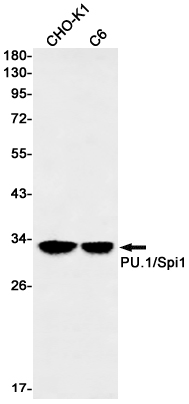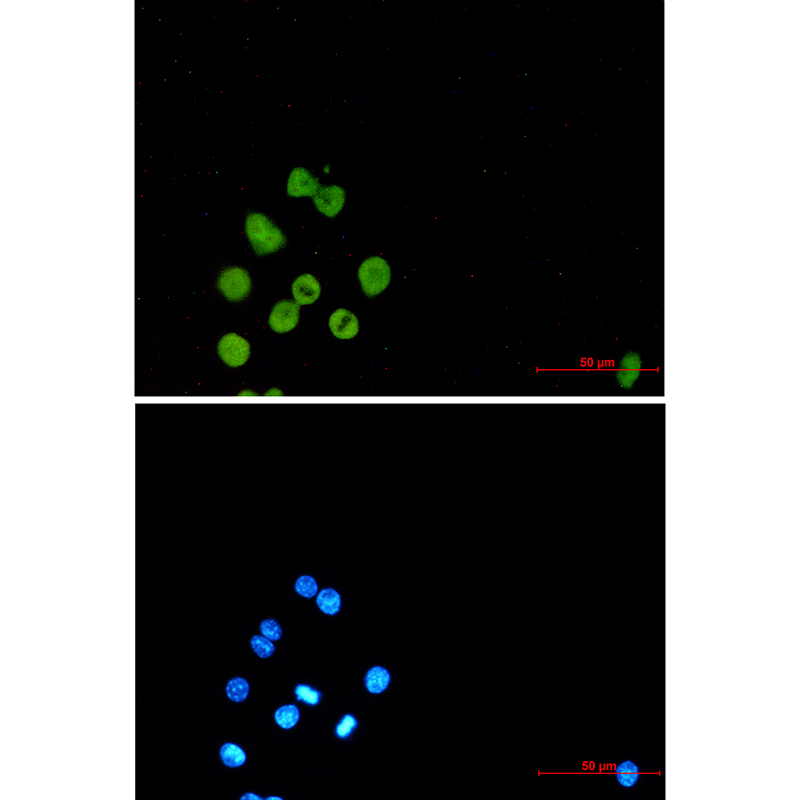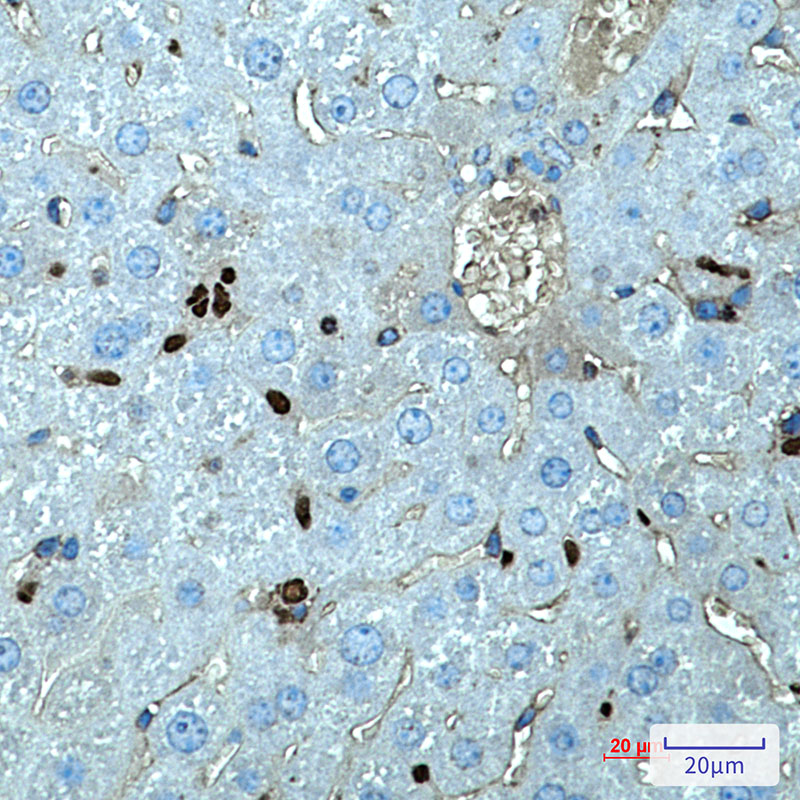


| WB | 1/500-1/1000 | Human,Mouse,Hamster,Rat |
| IF | 1/20 | Human,Mouse,Hamster,Rat |
| IHC | 1/50-1/100 | Human,Mouse,Hamster,Rat |
| ICC | 1/50-1/200 | Human,Mouse,Hamster,Rat |
| FCM | 咨询技术 | Human,Mouse,Hamster,Rat |
| Elisa | 咨询技术 | Human,Mouse,Hamster,Rat |
| Aliases | Dis1; PU.1; Dis-1; Sfpi1; Spi-1; Sfpi-1; Tcfpu1; Tfpu.1 |
| Entrez GeneID | 20375 |
| WB Predicted band size | Calculated MW: 31 kDa; Observed MW: 31 kDa |
| Host/Isotype | Rabbit IgG |
| Antibody Type | Primary antibody |
| Storage | Store at 4°C short term. Aliquot and store at -20°C long term. Avoid freeze/thaw cycles. |
| Species Reactivity | Human,Mouse,Hamster,Rat |
| Immunogen | A synthetic peptide of mouse PU.1/Spi1 |
| Formulation | Purified antibody in TBS with 0.05% sodium azide,0.05%BSA and 50% glycerol. |
+ +
以下是3篇涉及SPI1(PU.1)抗体的文献摘要信息:
1. **文献名称**:*Requirement of transcription factor PU.1 in the development of multiple hematopoietic lineages*
**作者**:Scott EW, Simon MC, Anastasi J, Singh H
**摘要**:该研究通过基因敲除小鼠模型证明SPI1(PU.1)是髓系和B细胞发育的关键调节因子,并利用SPI1抗体进行蛋白表达分析,揭示其在造血干细胞分化中的特异性作用。
2. **文献名称**:*Role of the transcription factor PU.1 in myeloid cell differentiation and function*
**作者**:Rosenbauer F, Tenen DG
**摘要**:文章综述了PU.1在髓系细胞分化中的调控机制,包括通过ChIP-seq和Western blot(使用PU.1抗体)验证其与靶基因(如CSF1R)的结合及表达调控,强调其在白血病中的潜在影响。
3. **文献名称**:*PU.1 is required to regulate stem cell commitment in acute myeloid leukemia*
**作者**:Steidl U, Rosenbauer F, Verhaak RG, Gu TL, Ebralidze A, Ouyang Z, Tenen DG
**摘要**:研究通过SPI1抗体检测白血病细胞中PU.1的蛋白水平,发现其表达异常导致干细胞分化阻滞,靶向恢复PU.1可抑制AML进展,为治疗提供新靶点。
以上文献均涉及SPI1抗体在机制研究或疾病模型中的应用,涵盖基础功能探索和临床相关性分析。
The SPI1 antibody targets the SPI1 protein (also known as PU.1), a transcription factor belonging to the ETS family that plays a critical role in hematopoiesis. SPI1 is essential for the differentiation and development of myeloid and B-lymphoid cells by regulating the expression of genes involved in immune response, cell proliferation, and apoptosis. It binds to purine-rich DNA sequences, activating or repressing target genes such as cytokines, cell surface receptors, and signaling molecules. Aberrant SPI1 expression is linked to hematological malignancies, including acute myeloid leukemia (AML), where mutations or dysregulation disrupt normal hematopoietic cell maturation.
SPI1 antibodies are widely used in research to study its expression, localization, and function in normal and diseased tissues. They enable detection via techniques like Western blotting, immunohistochemistry (IHC), and chromatin immunoprecipitation (ChIP-seq), aiding in understanding SPI1's role in transcriptional networks. Additionally, these antibodies help investigate SPI1's interaction with co-regulators or its involvement in autoimmune disorders and inflammation. Commercial SPI1 antibodies are typically validated for specificity using knockout cell lines or siRNA-mediated knockdown. Researchers rely on these tools to explore SPI1's dual role as an oncogene or tumor suppressor, depending on cellular context, providing insights into therapeutic targeting in hematologic cancers.
×